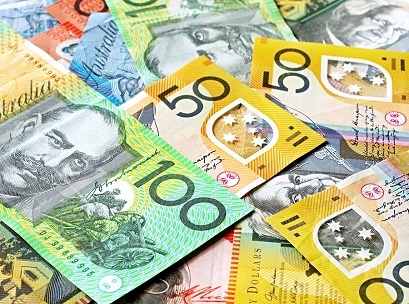
The Australian dollar has fallen Monday, buying 67.94 US cents from the 68.45 US cents last Friday.
Last Friday morning, the local currency was at 68.05 US cents from 68.45 US cents on Thursday.
On Thursday, the Aussie dollar hit its lowest level against the US dollar since the global financial crisis, while the ASX200 has closed 24 points lower.
It sunk to its lowest level against its US counterpart in a decade, and the Australian sharemarket has also finished lower, after the US Federal Reserve said its interest rate cut is unlikely to be the first of many.
The Aussie dollar is buying just 68.45 US cents, from 68.93 US cents on Wednesday, after the greenback rallied against other currencies.
Apart from a January 3 flash-crash that lasted just minutes, the last time the Aussie dollar was buying less than 68.50 US cents, which is where it was in the depths of the global financial crisis in early 2009.
The benchmark S&P/ASX200 index, meanwhile, closed down 23.7 points, or 0.35 per cent, to 6,788.9.
The broader All Ordinaries was down 24.8 points, or 0.36 per cent, to 6,871.9.
“There was a little bit of disappointment, given the confusion on Jerome Powell’s press conference,” said Bell Direct equities analyst Julia Lee.
The US Federal Reserve cut interest rates by 25 basis points on Thursday but Mr Powell, the Fed chairman, warned that it wasn’t “the beginning of a long series of rate cuts,” surprising many traders who thought it was.
“He wasn’t as aggressive as markets were anticipating,” Lee said.
US markets lost more than a percentage point on the news.
In Australia, most sectors were lower except for property trusts, industrials and consumer discretionary shares.
The mining sector was the biggest loser, down 1.5 per cent.
BHP fell 1.2 per cent to $40.26, Fortescue Metals was down 2.3 per cent to $8.14 and South32 was down 1.3 per cent to $3.10.
Rio Tinto was down 1.1 per cent to $97.71 and after the markets closed the mining giant announced it would pay $US3.5 billion ($A5.1 billion) in normal and special dividends to shareholders.
Gold prices dropped 1.3 per cent to $US1,406 on Mr Powell’s comments, sending Newcrest Mining down 3.9 per cent to $34.20 and Evolution down 3.8 per cent to $4.83.
Northern Star was down 7.3 per cent to $12.07 after it said it would spend a record $76 million on exploration in the current financial year.
The big banks were mostly up, with Westpac up 0.5 per cent to $28.80, ANZ up 0.4 per cent to $28.01 and NAB up 0.5 per cent to $28.64.
The Commonweath Bank was the outlier, falling 0.5 per cent to $81.92.
Janus Henderson was the biggest loser among ASX200 components, falling 12.2 per cent to $27.93 after the London-based asset management group said it had experienced $US9.8 billion ($A14.3 billion) in outflows in the second quarter.
Nufarm was up 3.1 per cent to $5.03 after strategic partner Sumitomo Chemical Company invested $97.5 million in the agricultural chemicals company.
PolyNovo was up 9.4 per cent to $1.75 after the Melbourne-based company said sales of its polymer wrap to treat wounds and burns were tracking significantly up this fiscal year.
PolyNovo shares have nearly tripled so far this year.
Pro Medicus shares were up eight per cent to $33.25 after S&P Dow Jones Indices announced the diagnostic imaging company would replace DuluxGroup in the ASX200, as Dulux is being acquired by Nippon Paint.
Yesterday, one Australian dollar buys 74.72 Japanese yen, from 74.81 yen; 61.99 euro cents, from 61.79 cents; 56.48 British pence, from 56.66 pence; and 104.46 NZ cents, from 104.35 cents.






